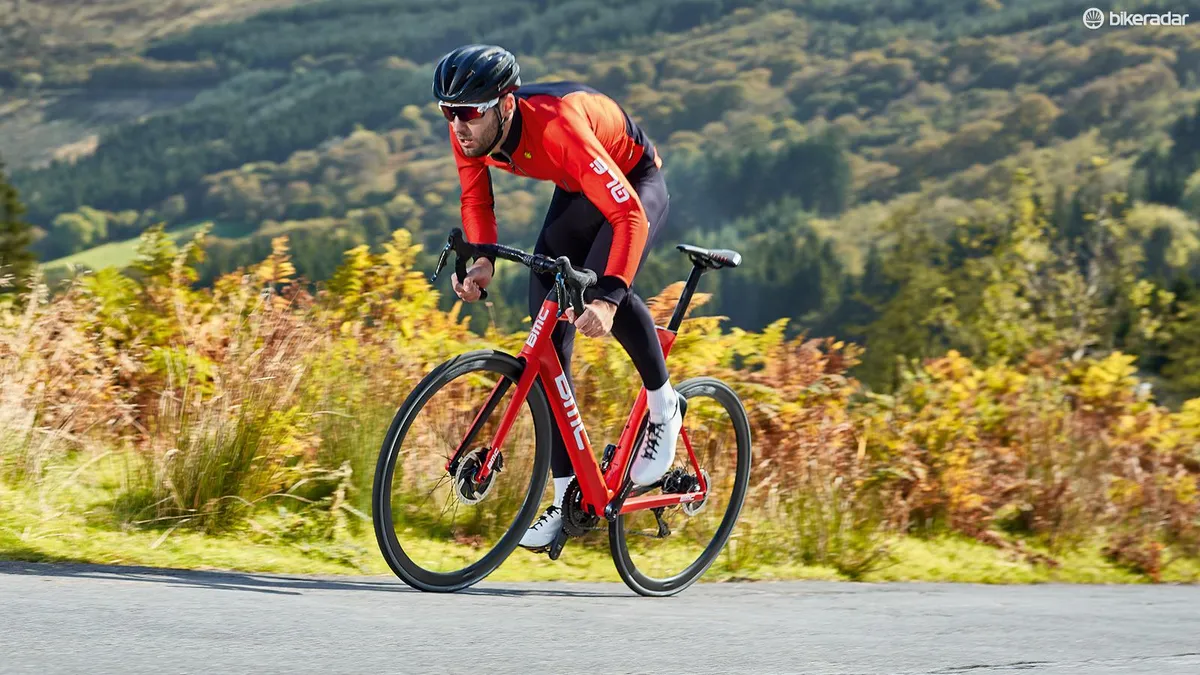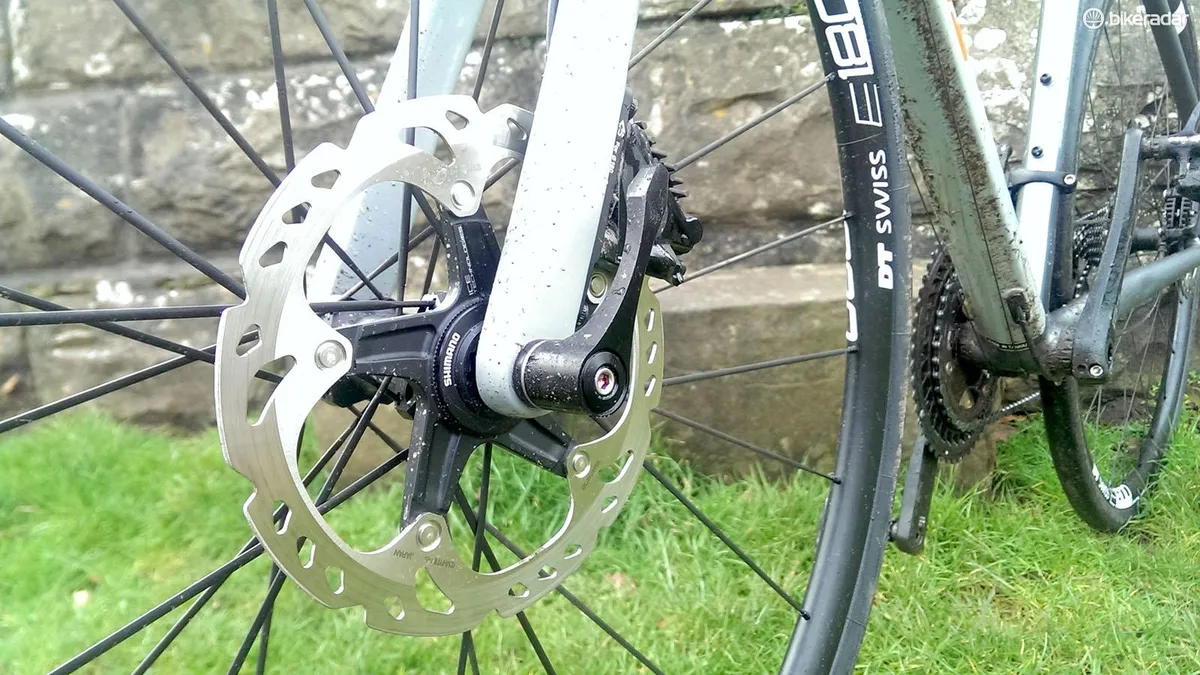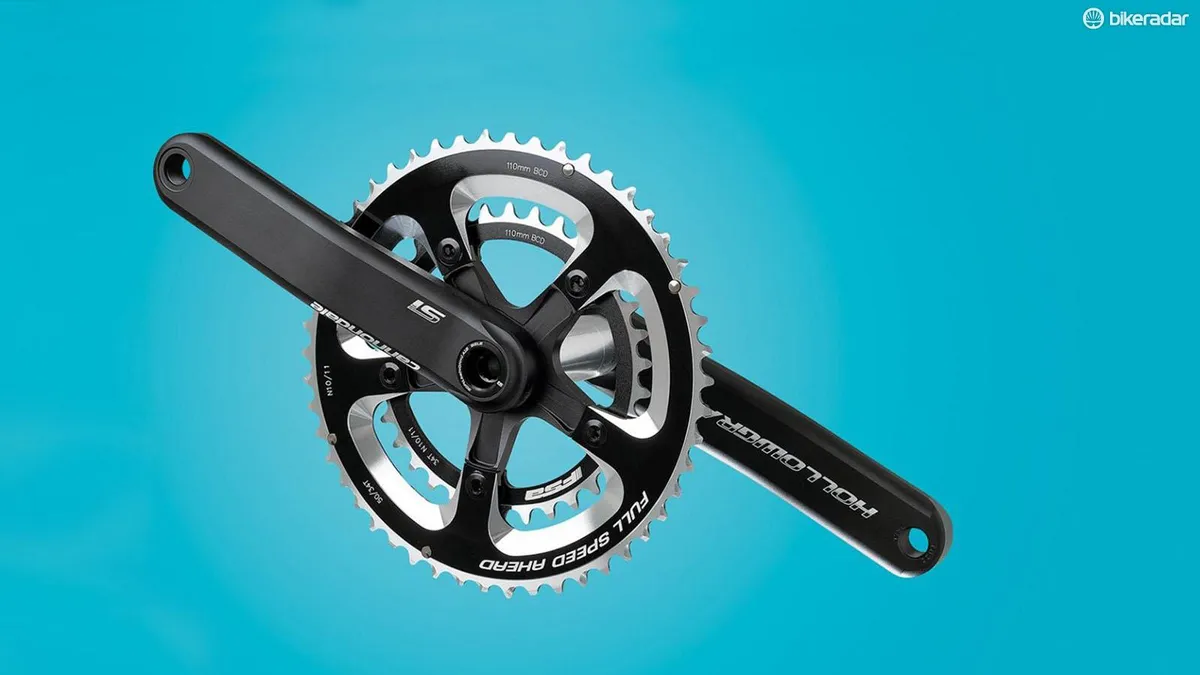Of late, a lot has changed in road bike design — wheel widths, braking, gearing — but not nearly enough to make replacing a newish bike worthwhile, right? After all, each new aspect only adds the kind of marginal gains in speed you can get by, say, developing asthma. And asthma is free… so, see you next TUEs, as they say in the pro teams. Probably.
- Best bike: our buyer's guide to which bicycle type you should buy
- Best road bikes under £1,000 for 2018
- Best bike helmets: a buyer's guide to help you find what's right for you
- The best bike locks: D-locks, foldable locks and chain locks tested
But as I’ve discovered for myself, the latest bikes with their wider tyres, hydraulic discs and semi-compact gearing are not only more comfy and easier to ride, they’re measurably faster. Everywhere. On the climbs, on the descents, and on the flat. Faster. Everywhere.
You’d be excused for thinking at this point that I’ve jumped on some £10,000 carbon superbike and got all giddy. I haven’t. You might also think this assessment isn’t relevant because I’m an expert pushing harder than you’ll ever care to, teasing out tiny differences between hundreds of different steeds, but I’m not. I’ve ridden mountain bikes for many years, but only recently crossed over to road (a process of confusion and disbelief this column has tackled more than once).
- Clipping in: 5 mistakes I made so you don’t have to
- 7 things I’ve learned in a year of road riding
- You don’t need an expensive bike to enjoy mountain biking…
So it’s as an increasingly keen newcomer, riding what I think are typical bikes for the average Joe/Jolene, that I’m saying this. I’ve been genuinely surprised by the extra speed of the latest wheels, tyres and brakes. Especially as my new bike is actually 1.5lbs heavier than the old one… and still quicker uphill.
It’s almost as if new stuff can be better than older stuff, rather than just a cynical marketing conspiracy! I mean, who knew?

The details. For a little over a year, I’ve been riding a (used) GT GTR from 2014: aluminium frame, carbon fork, £799 new. It’s a typical entry-level machine, and took me from early explorations using flat pedals and my flappy mountain bike gear to being clipped in and Lycra-ed up to the point where now even the neighbours know which way I dress.
Along the way I’ve gradually upgraded, and as I’ve done so using my own money, it hasn’t involved wild carbon unaffordableness. They’re pretty typical changes for keen new riders. I focused on braking and gearing… so not dying of the major things, basically. Here’s where I got to:
My very first ride netted me 14 Strava Achievements: 2 Personal Records, 7 silvers and 4 bronze on a loop I ride regularly
First I binned the sketchy 23mm Mavic Yksion tyres, fitting 25mm Continental GP 4 Seasons (better grip, confidence, braking and comfort); next I swapped the terrifying Tektro Dual Pivot brakes for marginally less deadly Shimano 105 (big benefit on the front, less so on the rear); fitted softer Koolstop Salmon pads on the front (noticeably more feel and a bit more power); swapped from an 11-28t cassette to 11-32t for local climbs that top 20 percent (big help); added a 105 long-cage mech to accommodate it (crisper than the unhelpfully short Tiagra); fitted new shifter cables (massive improvement); and replaced the grumbly, gritty square-taper bottom bracket with Shimano Hollowtech II. Naturally that required a new crank, but by this point I was hooked… on went a 10-speed 105 compact (much lighter, much crisper shifting, smooth, lush).
So on paper, the upgraded GT all but matches the bike that’s replaced it, a 2018 Vitus Zenium SL VR Disc. Aluminium frame, carbon fork, Shimano 105. At £1,299 it’s a reasonable next step up after entry level — particularly if you’re not looking to make the expensive jump to carbon.
But the only standout difference is flat-mount Shimano RS505 hydraulic brakes, so is it worth the outlay? Just ten or so rides into a year-long test, I can say: absolutely.

My very first ride netted me 14 Strava Achievements: two Personal Records, seven silvers and four bronze on a loop I ride regularly. They were spread across flat sections, descents and even climbs.
With around 600g extra weight, bigger 28mm tyres flattened over 20mm rims, and taller gearing at both ends, that was a surprise. A big one.
I’d have taken better braking alone as justification for the change. Not only are the GT’s brakes physically incapable of bringing me to a halt on some of mid-Wales’ steeper, farm-filthy lane descents, they’ve worn the lovely Mavic Ksyriums down to the wear indicators, effectively writing off a £600 upgrade I was lucky to get with the bike. Remind me why roadies love rim brakes so much again?

By the end of the second ride on the heavier Zenium, I had no desire to ever go back to rim brakes, narrow tyres or, in fact, the GT I’d once loved at all. Well, not loved. Liked. Well, not liked. But those wheels! Fantastic.
Stability, steering and handling are all better on the Vitus, though at least in part that’s thanks to the longer wheelbase and better weight distribution — the GT was a size too small. And before I start sounding like an advert for Vitus, let’s be clear: it's far from the only brand offering bikes like this (look here for a comprehensive list of your best options between £1,000–£2,000). It was just the one with the vision to send me one to smash through potholes, sheep and snowdrifts for a year, devaluing it massively.
As a bonus, it arrived practically ready to ride, fully built! The postman was quite upset by the size of my package, let me tell you. It’s the Lycra. Boom-chish.
You could argue it’s not really the bike making me faster uphill, because it’s heavier. And that’s true, though the supple traction and extra stability don’t hurt on very steep, badly surfaced roads (it’s everything else that hurts).
Really it’s been the gearing forcing me to work harder and stand more, but what’s surprised me is that I can. I haven’t quite passed out at the top of anything yet, despite the 11-28t cassette and 52/36t semi-compact chainset putting the Zenium’s lowest gear halfway between the second and third gears of the GTR. It’s been an eye-opener.

Semi-compacts are starting to take over from 50-34t compact front rings for road bikes. Don’t let that put you off. You should always experiment with gearing, as it makes a huge difference — turns out that counts with going up as well as down.
If you’re curious about the effects of gearing changes on road speed, cadence or anything else, try this excellent calculator for a really clear comparison of what you’ve got with what you’re planning to fit.
Or you could always just, you know, buy a new bike with different gears already on it…
